Spinal Astrocytoma — Surgical treatment of Astrocytoma in the Best Hospitals of Germany
Treatment prices are regulated by national law of the corresponding countries, but can also include additional hospital coefficients. In order to receive the individual cost calculation, please send us the request and medical records.
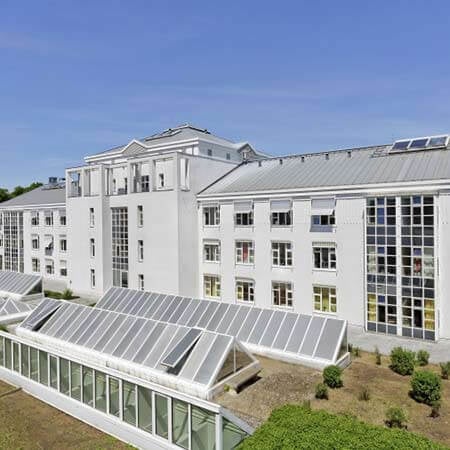
Department of Spinal Surgery
The Department of Spinal Surgery at the Vivantes Auguste-Victoria Hospital all diseases of the spine - both conservatively and operatively. Patients with herniated intervertebral discs, displacement of vertebrae, stenosis of the spinal canal or back pain are treated here. In addition, specialists of the department have a unique experience in the field of complex reconstructive and revision surgeries, which are conducted to continue or correct the previous surgical treatment.
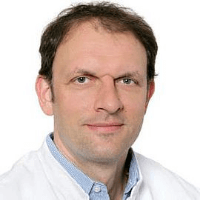
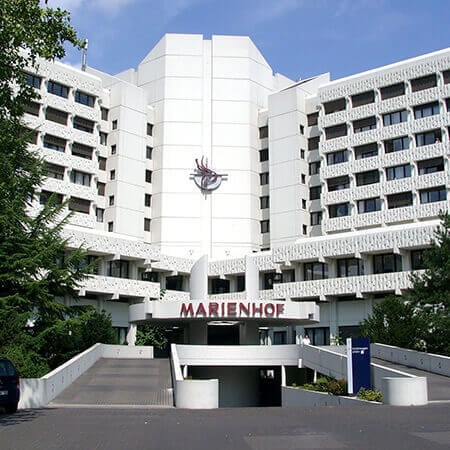
Department of Spinal Surgery
The Department of Spinal Surgery offers the full range of effective treatment methods in the area of its specialization. A highly qualified team of doctors is at the service of the department's patients, who have in their arsenal advanced conservative and surgical treatment methods for pathological changes in the spine. Spinal surgical procedures are performed in modern operating rooms, the technical equipment of which allows spinal surgeons to perfectly perform both major open surgery and sparing interventions: minimally invasive, endoscopic, and microsurgical. Surgical treatment is complemented by a carefully planned course of physiotherapy. This includes procedures such as therapeutic exercises, manual therapy, massage, osteopathic treatment, etc. The department's team of doctors consists of 10 highly qualified specialists who, together with experienced nursing staff, admit more than 1,300 inpatients annually. The medical facility is certified by the German Society for Spine Surgery (DWG) as a level II specialized center. The department's medical team makes every effort to provide each patient with optimal treatment in a pleasant and friendly atmosphere.
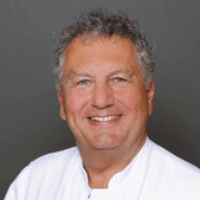
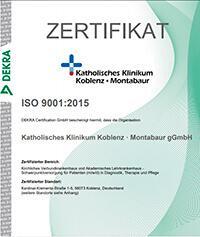
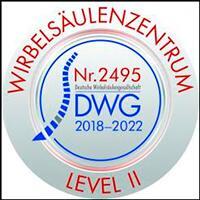
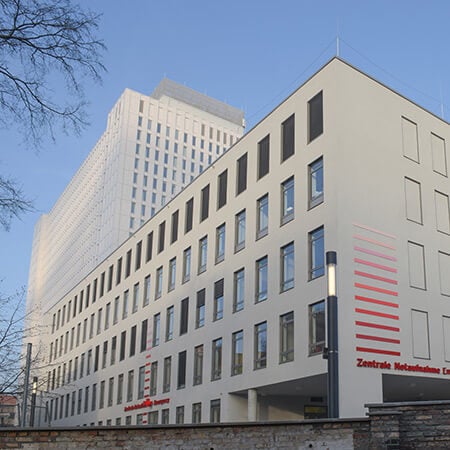
Department of Adult and Pediatric Neurosurgery, Spinal Surgery
The Department of Adult and Pediatric Neurosurgery, Spinal Surgery offers all the possibilities of modern surgical treatment for diseases of the central and peripheral nervous system in patients of all ages. More than 6,000 surgical procedures are performed annually in the department's high-tech operating rooms. Both planned and emergency neurosurgical procedures are performed here. The department's surgical team focuses on patients with cerebrovascular diseases, brain and skull base tumors, spine and spinal cord diseases, cerebrospinal fluid circulation disorders, and pathologies of the peripheral nervous system. The department's team of physicians also has extensive experience in functional neurosurgery: specialists perform deep brain stimulation for movement disorders, spinal cord stimulation for back pain, and vagus nerve stimulation for epilepsy. The department works closely with neurologists, radiologists, and nuclear medicine specialists to provide patients with the highest level of comprehensive medical care. The department is recognized as one of the top neurosurgical centers in Germany and beyond, as evidenced by consistently high treatment success rates and numerous quality certifications, including the German Cancer Society (DKG) Certificate, the German Spine Society (DWG) Certificate, and the Leading Medicine Guide Certificate.






Spinal astrocytomas are rare tumors of the central nervous system. These neoplasms vary in their grade. Unlike the brain, where predominantly malignant astrocytomas develop, the spinal cord is often affected by benign tumors. Fortunately, the disease is curable. The probability of cure is highest in the case of complete surgical tumor removal. You can go to Germany to undergo your surgical treatment of spinal cord astrocytoma. This is where you will have the best chance of recovery.
Content
- How can spinal cord astrocytomas be treated?
- Preoperative diagnostics for spinal cord astrocytomas
- How is tumor removal surgery performed in Germany?
- What treatment results can be expected in patients with spinal cord astrocytomas?
- Why is it best to undergo your spinal astrocytoma treatment at German hospitals?
- Prices for the treatment of spinal astrocytomas at German hospitals
Doctors remove the vertebral arches to approach the spinal cord. They then resect the tumor as completely as possible to avoid recurrence and the need for any additional treatment. German surgeons use intraoperative neuromonitoring to avoid damaging important areas of the spinal cord.
You can seek medical attention from the Charite University Hospital Berlin, the Vivantes Auguste-Victoria Hospital Berlin, or the Catholic Clinic Koblenz-Montabaur.
Our company's employees will take care of organizing your trip to Germany. We will help you choose a hospital, contact its administration, and make an appointment on your preferred day. We will also book hotel and airline tickets, meet you at the German airport, and take you to the hospital by car.
How can spinal cord astrocytomas be treated?
Because spinal cord astrocytomas are very rare tumors, standard treatment approaches have yet to be developed. Therapeutic tactics may therefore vary at different hospitals.
Treatment usually begins with surgery. The tactics used after the surgical treatment depend on whether doctors have managed to remove the neoplasm completely, and what grade it has. If the tumor was benign and completely removed, no further treatment is required. If the neoplasm was partially removed, as well as in the case of a high-grade spinal cord astrocytoma, postoperative radiation therapy and systemic chemotherapy are required. In recent years, doctors have also begun using targeted therapy.
For patients with malignant tumors, both surgical treatment of spinal cord astrocytomas and radiation therapy can be used. It has not yet been established which of these approaches works best.
Preoperative diagnostics for spinal cord astrocytomas
Prior to undergoing treatment of astrocytoma, a patient will be diagnosed. The main method of imaging the spinal cord in Germany is an MRI. The technique is very accurate and allows doctors to suggest the histological type of the tumor and its grade even before obtaining tissue samples for a histological examination. An MRI scan also determines the boundaries of the tumor and helps doctors plan surgery. Healthcare professionals can also use computed tomography to assess the condition of the vertebrae. Many patients undergo neurophysiological studies before their treatment. With their help, doctors detect important areas of the spinal cord that cannot be damaged during surgery, so as not to cause a neurological deficit.
How is tumor removal surgery performed in Germany?
Surgical treatment is performed under general anesthesia. A doctor performs a laminectomy, that is, removes the vertebral arches to approach the spinal cord. The task of neurosurgeons is then to detect the tumor tissue and remove it as completely as possible. At the same time, it is important to prevent aggravation of the neurological deficit.
During treatment, doctors separate tumor tissue from normal tissue. The boundary can usually be seen if a patient has a low-grade astrocytoma. High-grade tumors are, however, characterized by infiltrative growth. Tumor tissue grows into normal tissue and does not have a clear boundary. Such neoplasms cannot be completely removed. They are partially removed, and then doctors try to control the disease with radiation therapy and chemotherapy.
The following options can be used for the resection of spinal cord astrocytomas, depending on the extent of surgery:
- total resection, which implies a complete removal of the neoplasm;
- subtotal resection, which implies an almost complete removal of the tumor;
- partial resection is when only part of the tumor is removed.
Optimal treatment results can be achieved in the case of total tumor removal. It depends on the technologies used and the experience of a neurosurgeon. In countries with poor medicine, spinal cord astrocytomas can be completely removed in only 5% of cases. At the same time, doctors at the best and highly specialized Neurosurgery Centers in Germany manage to perform total resection of low-grade astrocytomas in 72% of cases. This usually results in a cure for the disease since such tumors rarely recur after their total removal.
An important task facing neurosurgeons is preserving spinal cord functions. It is necessary to avoid the development of a neurological deficit so that after the operation a patient maintains work capacity and a high quality of life. After tumor removal, the neurological deficit sharply decreases in the first few days. Patients then undergo their rehabilitation, and further improvement will be achieved within a few more weeks.
When performing the operation, doctors use advanced technologies to more likely remove the astrocytoma completely and, at the same time, not damage the functionally important areas of the spinal cord. The specialists usually use the following technologies:
- intraoperative neurophysiological diagnostics;
- intraoperative ultrasound or computed tomography;
- neuronavigation.
Doctors in Germany use modern operating microscopes and other equipment that allows them to perform surgical interventions with the best results and a low risk of complications. At the final stage of the surgical intervention, the spine will be stabilized. The stability of the spine is usually impaired due to the removal of vertebral bone tissue to reach the spinal cord. Doctors can fix adjacent vertebrae (spinal fusion) or implant dynamic stabilization systems to stabilize the spine. The second option is more physiological because it allows patients to preserve movement in their spine and thereby reduce the risk of developing a disease in the adjacent spinal segments.
What treatment results can be expected in patients with spinal cord astrocytomas?
The success of the surgical treatment depends on the following factors:
- whether a doctor has managed to completely remove the tumor (the fact of total resection can be confirmed by a postoperative MRI scan);
- tumor grade;
- patient's age.
The younger the patient, the better the prognosis. The best results can be achieved before the age of 25, and after 40, the prognosis worsens.
The possibility of total tumor resection is determined, on the one hand, by the level of medical care provided and, on the other hand, by astrocytoma grade. There are four such grades in total. 1-2 grade tumors are usually successfully treated. If the tumor is completely removed, the risk of its recurrence is minimal. Even if it cannot be completely removed, the residual tumor can be destroyed using radiation therapy. As a result, up to 93% of patients undergoing their treatment in developed countries achieve a five-year survival rate. However, if the tumor is malignant, a cure is unlikely. Such neoplasms can be removed only partially. Surgery and follow-up radiation therapy help doctors increase a person's life expectancy by several years.
Why is it best to undergo your spinal astrocytoma treatment at German hospitals?
German hospitals offer top-class medical services. All the innovations in spinal surgery are available in Germany, and the hospitals are equipped with the latest technology. The surgical treatment of astrocytoma in this country will be more effective and safe and will significantly reduce the neurological deficit after surgery. With a high probability, the operation will help cure the disease completely.
Treatment at German hospitals has the following benefits:
- high-precision preoperative diagnostics will help doctors plan the treatment perfectly;
- with a high probability, the spinal cord tumor will be completely removed, which maximizes the chances of curing the disease;
- intraoperative diagnostics reduces the risk of damage to functionally important structures of the spinal cord and the formation of a neurological deficit;
- the spinal stability is preserved following the operation;
- patients can undergo neurorehabilitation to maximize the function of their spinal cord after surgery.
Prices for the treatment of spinal astrocytomas at German hospitals
You are welcome to visit the Booking Health website to find out prices at German hospitals. Our website shows the cost of treatment at different Spinal Surgery Centers. You can compare the cost of treatment and choose a treatment program at the best price.
The cost of treatment varies at different German hospitals, as it depends on many factors, such as the type of hospital (prices at university hospitals are higher), the methods used, and equipment. The choice of doctor may also affect the price.
You should not choose a German hospital based only on the price. The surgical removal of an astrocytoma is a complex operation, and its results vary greatly at different hospitals. You can use the recommendations of the Booking Health service. We put the recommended hospitals at the top of the list. In addition, we can individually select a hospital that specializes in the removal of spinal cord tumors, has vast experience, uses the most advanced equipment, and achieves outstanding success in this field of spinal surgery.
Please leave your request on the Booking Health website to get a consultation. Our specialists will take care of organizing your treatment in Germany. We will help you prepare your documents, book hotel and airline tickets, meet you at the airport, and take you to the hospital by car. When you choose a treatment program through Booking Health, you will save significantly due to the absence of taxes for foreign patients.
Authors:
The article was edited by medical experts, board-certified doctors Dr. Nadezhda Ivanisova and Dr. Vadim Zhiliuk. For the treatment of the conditions referred to in the article, you must consult a doctor; the information in the article is not intended for self-medication!
Sources:

